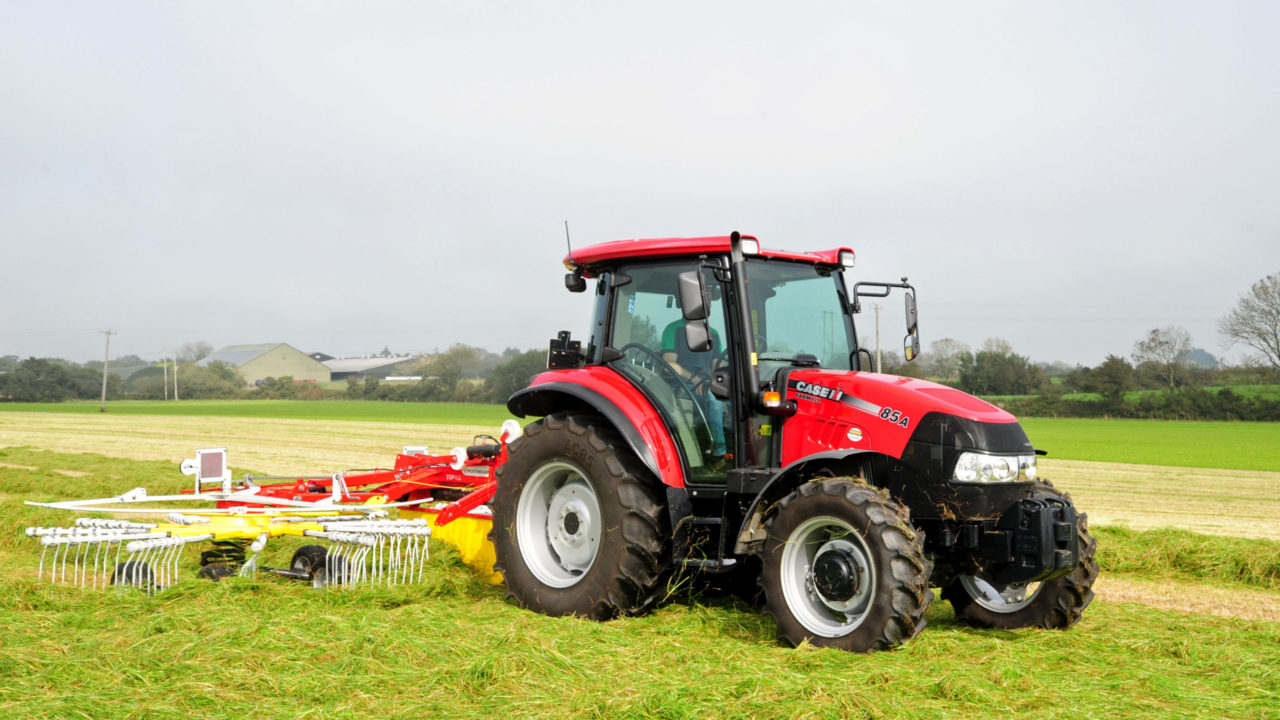If the Fordson was the major innovation that brought mechanisation to farming, it was the International Farmall which picked up where Henry Ford left off and carried on with the revolution.
The name was first introduced in 1921 for a lightweight and manoeuverable tractor that offered an alternative to the Fordson's bulk and inflexibility, and it still appears on the smaller tractors within the Case IH range.
Fulfilling a demand
While Henry Ford might have been a great one for giant leaps forward, he was somewhat conservative in his approach to building upon what he had created.
International managed to take advantage of this hesitancy towards developing the original concept, with a new tractor that addressed many of the Fordson's shortcomings.
The early 1920s had seen the decline of large, heavy prairie busting machines and the adoption of the more affordable lightweights, a charge led by Henry Ford and his aggressive pricing policies.
International itself had enjoyed great success with such models as the 12-25 and 15-30, sharing an equal market share with Fordson in 1927.
The following year Ford gave up tractor manufacture in the U.S entirely and shipped the production tools over to its Cork factory. International went on to claim 62% of the market as a result of this departure.
Self-propelled cultivators
Yet it wasn't just tractors that were selling. The first few decades of the 20th century saw a lot of companies producing motor cultivators. These tended to be single purpose machines which were light in weight and relatively cheap.

International had made a 12hp model which proved to be flawed out in the field, stability and engine reliability being two major issues.
Despite these being addressed they failed to sell well, which was something of a blessing as the company made a $50 loss on each one.
Yet the idea never went away and the engineers kept working on the concept, moving the engine into the centre and reversing the drive direction so that it went narrow end first.
Evolution rather than revolution
Despite the comprehensive redesign, certain features still remained. These included a parallel rail frame in which the engine was mounted and from which implements could be hung.
It also retained its tricycle configuration as it was intended to work in both cotton and corn (maize) crops, and so its dimensions needed to accommodate the spacing of the rows.

To this end, the front wheel was at first a single item but this soon evolved into a narrow pair. This allowed a very tight turning circle, giving it a manoeuverability which many competing designs lacked.
The rear axle, meanwhile, was pushed out to a width of 74in, presenting a very broad rear end in relation to its overall size.
Ground clearance at the rear was enhanced by drop axles which were mounted almost within the breadth of the rear wheel, thus enabling it to pass down the crop rows without disturbing the plants.
The Farmall name is born
As the design progressed it was clear that a new name would be required to differentiate it from the old cultivator, and so in 1919 it was dubbed the Farm-All to reflect the wide range of roles it was expected to fulfil.
Shortly afterwards the hyphen was dropped and the Farmall name entered the farm machinery lexicon where it remains until this day.
The first tractors were released to selected farms in 1923. At first, only a limited number of tractors were built, but as these proved successful, production was ramped until 1930 when over 42,000 were made.
Unfortunately, the great depression then intervened and sales dropped to just 14,093 the following year.
Competing with the mule
During the war years the Farmall grew up, gaining extra size and power culminating in the Model M of 38hp which was produced from 1939 until 1954.
This was a good-sized tractor for its time, but even after the war, 30% of U.S farms still used draught animals only, and farm size was still often a matter of 20ac or less.

The Model M was too big a tractor for many of these enterprises so International returned the Farmall to its roots with the introduction of the Farmall Cub in 1945.
This was a 12hp model aimed specifically at the smaller farm and vegetable grower. It also found favour as a ground keeper's tractor just as its forebears had done, for International had always been keen to exploit other markets for its machines.
The Cub proved to be immensely popular and over 245,000 units were manufactured between 1947 and 1981, the year it was finally withdrawn.
Farmall as a badge
From the 1950s onwards, the range of tractors bearing the Farmall name expanded, although it was often the case that the same model might be sold with an International or McCormick badge.

In effect, the use of the name became a branding exercise with it being mainly reserved for the U.S market. However, with the introduction of the World Wide Series (designated the 74 series) the company dropped it altogether.
Another resurrection
It was in 2004 that Case International yet again brought the Farmall name back and applied it to its smaller range range of utility tractors.

In the company's present range there are two distinct lines of Farmall. The Farmall A is a budget conscious machine that is designed, just like its predecessors, to be small, light and maneuverable.
The slightly more upmarket Farmall C series tend to be better equipped and are now available with 120hp under the bonnet; some 10 times more than the original which appeared a century ago.

